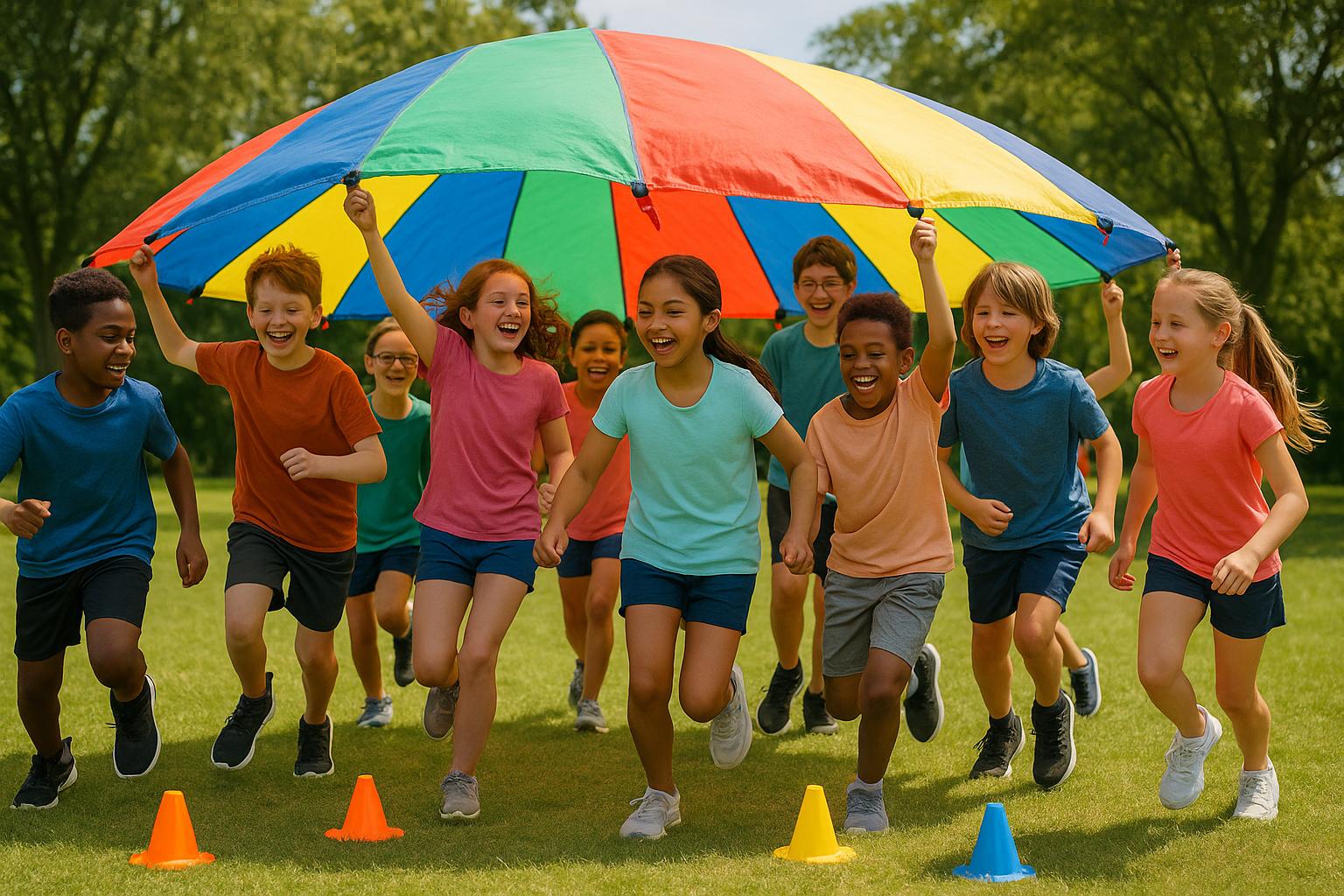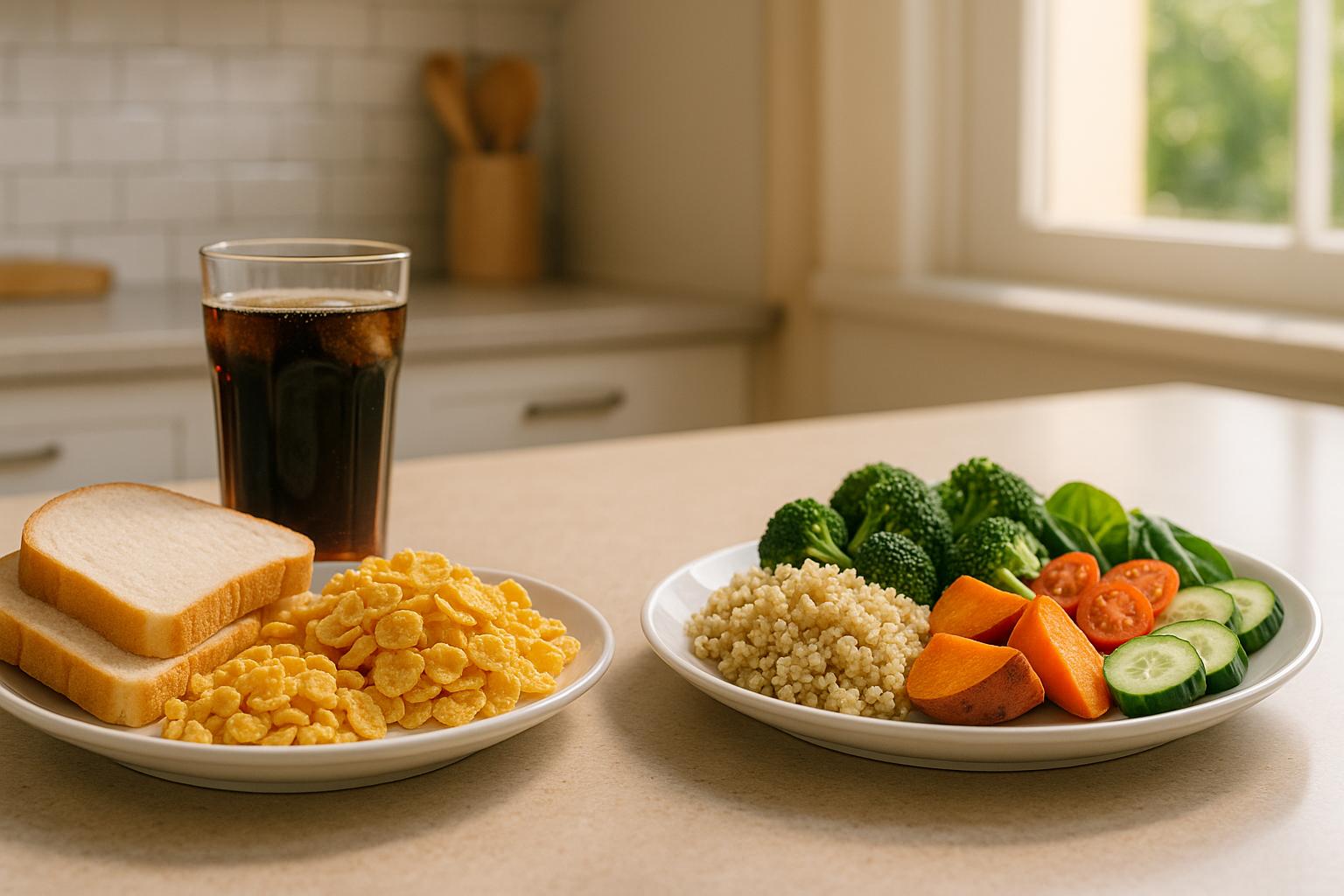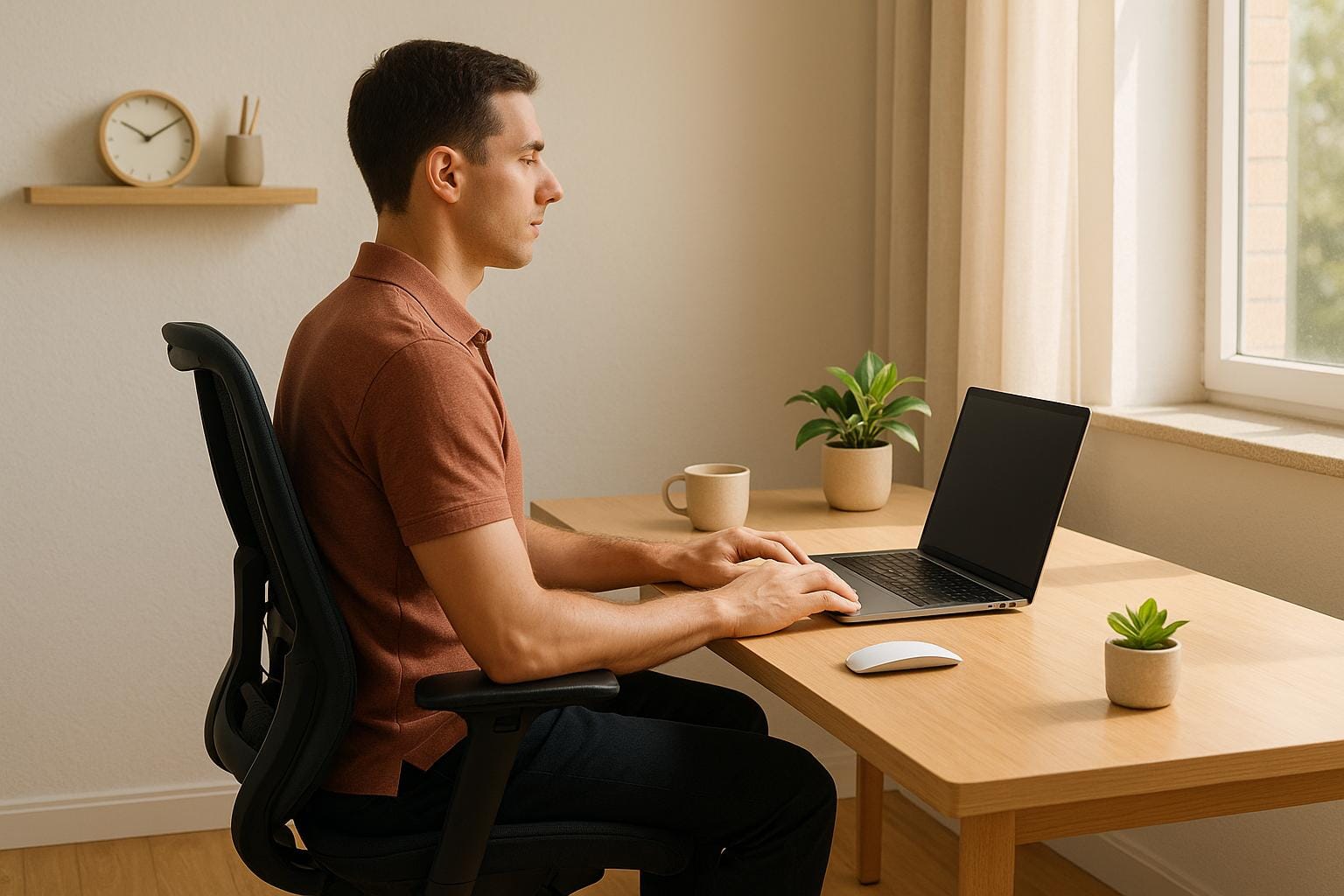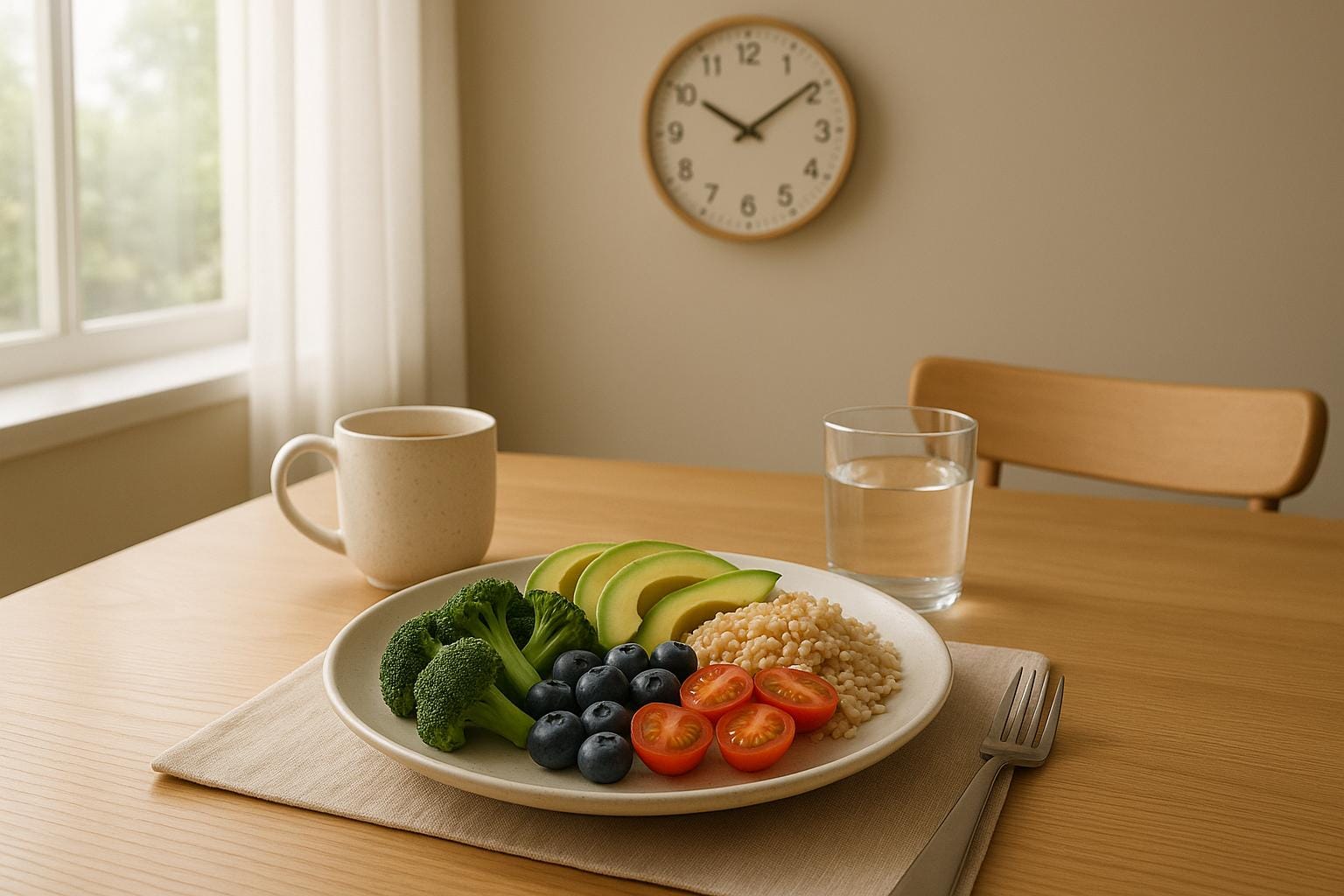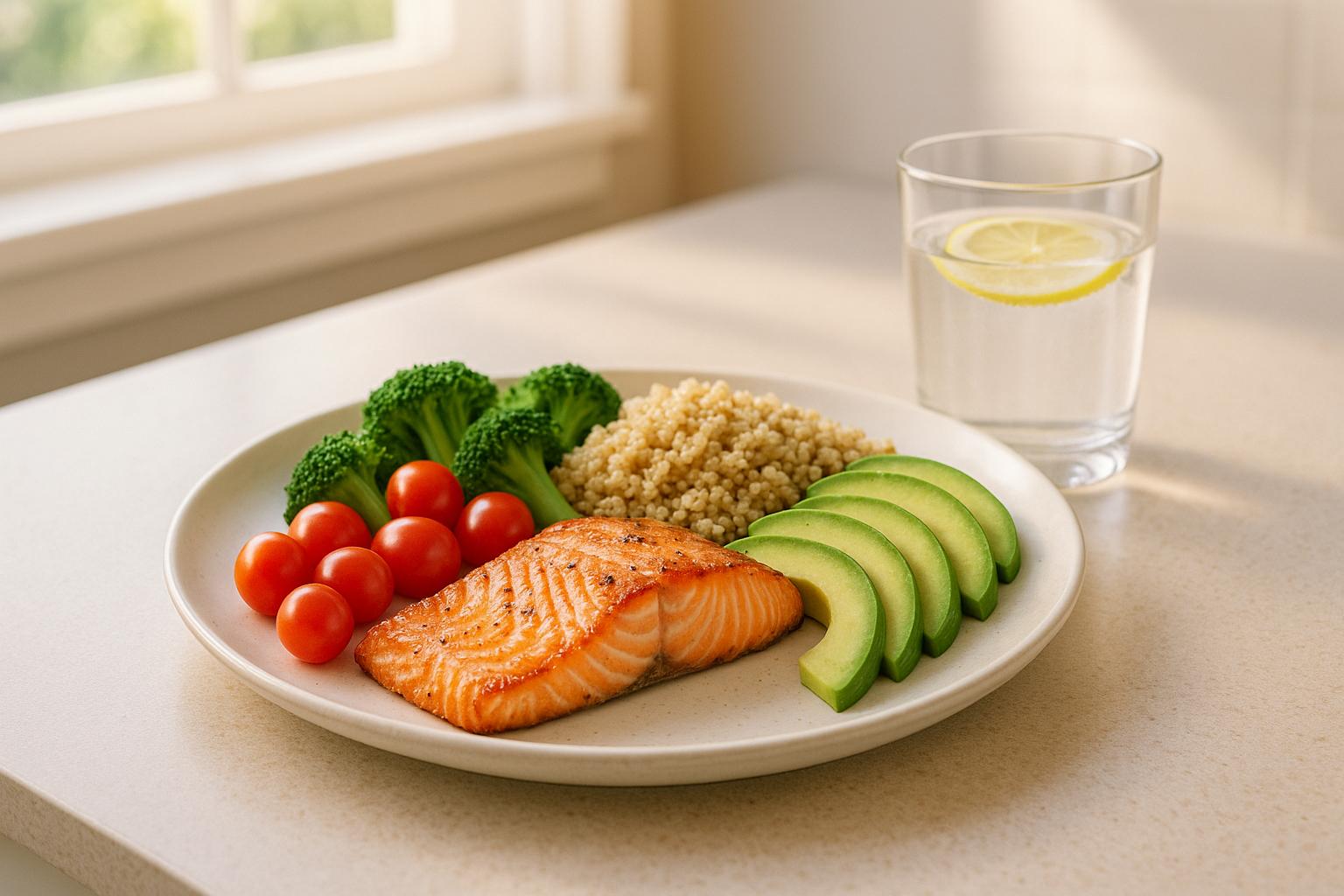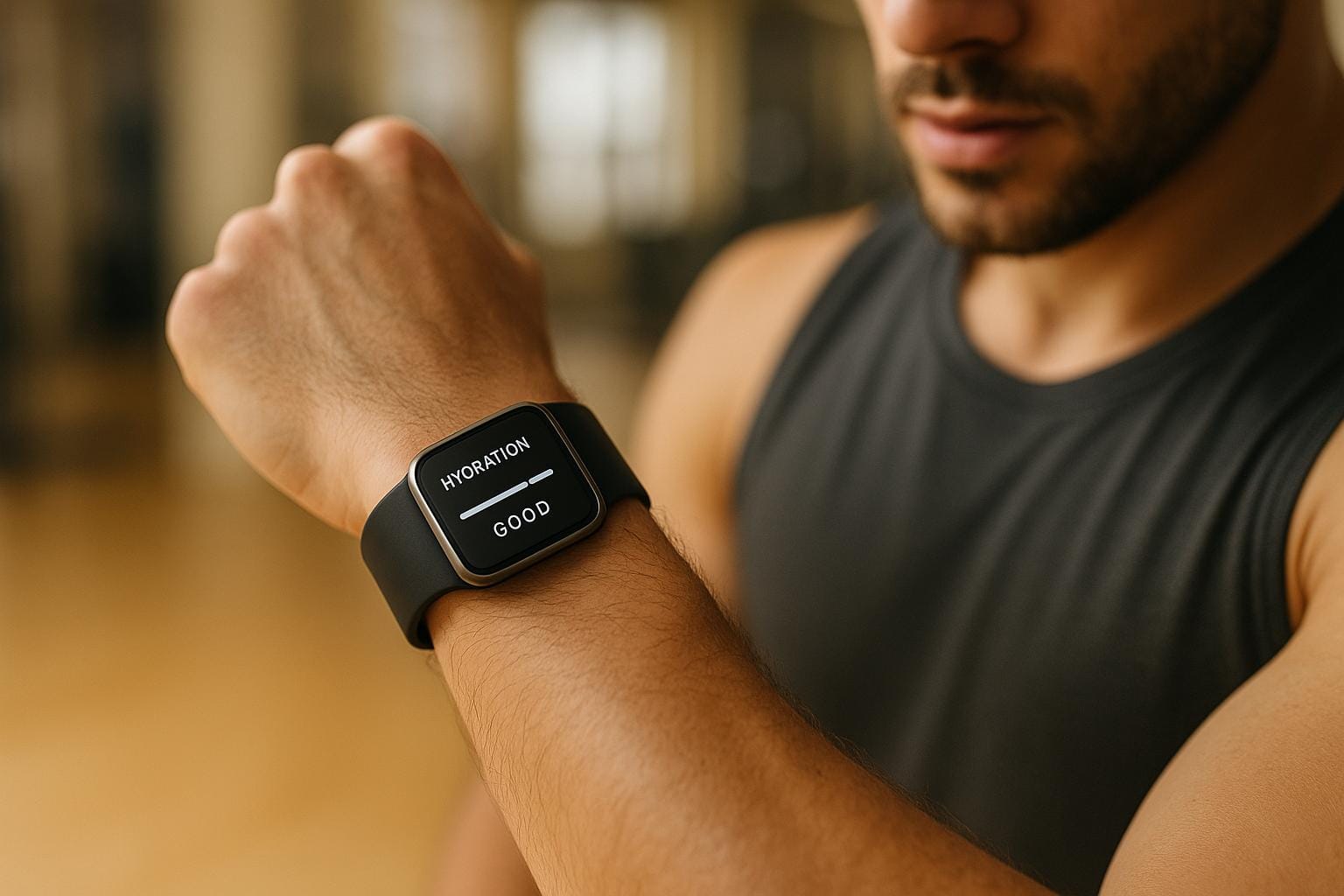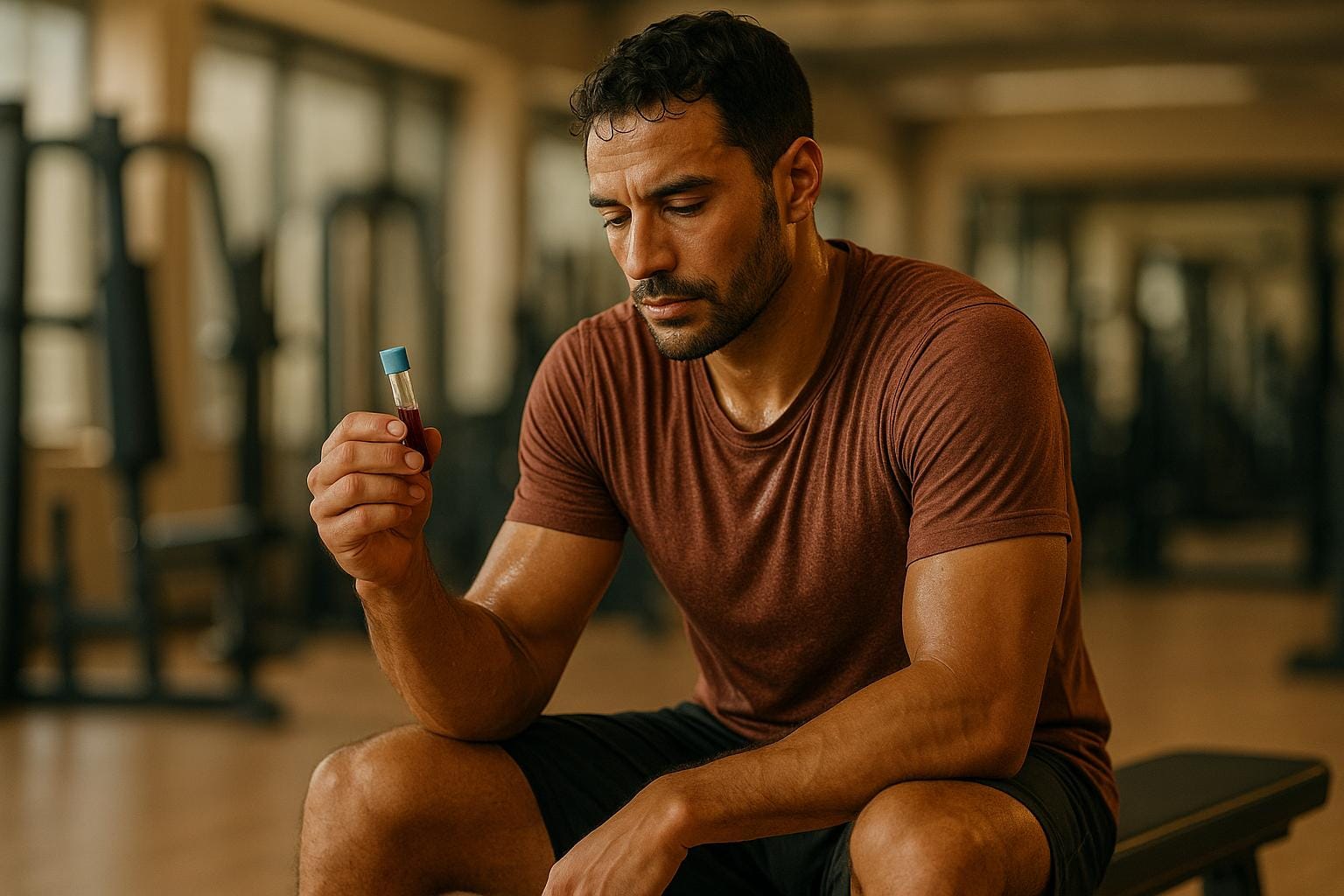Group fitness games are a fun way to get preteens moving while promoting teamwork, communication, and social skills. These activities help kids meet the recommended 60 minutes of daily physical activity, improve their mood, reduce stress, and even boost school performance. Below are seven engaging games that combine physical challenges with group interaction, making exercise enjoyable for all fitness levels:
- Tug of War: A classic strength and teamwork game that also develops coordination and mental resilience. Requires a durable rope and gloves for safety.
- Tag Team Fitness Challenge: Teams rotate through exercise stations, building endurance and camaraderie. Simple equipment like cones and mats are used.
- Fitness Bingo: Players complete exercises to mark off bingo squares, combining movement with friendly competition. Cards can include activities like jumping jacks or squats.
- Circuit Training Game: A station-based workout that targets various muscle groups with activities like planks, burpees, and jumping jacks. Great for cardiovascular health and stamina.
- Cross Over Relay: A relay race that incorporates sprinting, throwing, and catching to improve speed, hand-eye coordination, and teamwork.
- Partner Sit-and-Stand: Pairs work together to stand up from a seated position, promoting coordination and communication.
- Safety and Participation Guidelines: Ensure a safe, inclusive environment with proper warm-ups, clear rules, and adjustments for different abilities.
These games encourage kids to stay active, build confidence, and develop lifelong healthy habits. Whether outdoors or indoors, they’re easy to set up with minimal equipment and can be tailored to suit any group size or fitness level.
14 Fun Fitness Partner Games For Group Workouts
Tug of War
Tug of war is a timeless game that brings a mix of teamwork, strength, and strategy to group fitness activities for preteens. Unlike solo exercises that can sometimes feel isolating, this game fosters a sense of connection and collaboration as teammates pull together - literally - for a shared goal.
How to Play
Setting up a game of tug of war is simple, but a little planning goes a long way. Start by splitting the group into two evenly matched teams, balancing both the number of players and their strength to keep things fair. Each team lines up on opposite ends of the rope, gripping it firmly with both hands. Use cones or markers to set a boundary about 16 feet apart, which will determine the distance a team needs to pull to win.
The goal is straightforward: drag the opposing team across the center line. But winning requires more than brute strength. Teams quickly realize that success depends on coordination and communication. Random pulling won’t cut it - they need to establish a rhythm, call out commands, and work as a cohesive unit.
To keep the energy high and everyone involved, consider mixing things up with rotating team members or running multiple rounds with different combinations. This way, no single team dominates, and everyone gets to experience the thrill of victory and the challenge of regrouping after a loss. The combination of strategy, teamwork, and physical effort makes tug of war not only fun but also an excellent workout.
Health Benefits
Tug of war is more than just a game - it’s a full-body workout disguised as fun. The pulling motion activates the upper body, core, and legs, building strength that’s practical for everyday activities. Bracing their feet and leaning back helps players improve balance and develop better body awareness.
It’s also a great way to get the heart pumping. A typical match raises heart rates and breathing, contributing to the recommended 60 minutes of daily physical activity. Beyond the physical benefits, tug of war strengthens mental resilience. Preteens learn to push through fatigue, stay focused under pressure, and recover from setbacks.
The game’s social aspects are just as important. Teammates must communicate clearly, support one another, and celebrate their shared successes. These experiences help young participants build leadership skills and understand how individual contributions impact group outcomes.
What You Need
The equipment for tug of war is minimal, but quality matters for safety and enjoyment. You’ll need a thick, durable rope designed specifically for the game. A 65-foot rope is a good size for most preteen groups, and these ropes typically start at $119.00, available at sports stores or online.
To prevent injuries, ensure everyone wears gloves to avoid rope burn and athletic shoes with solid grip to prevent slipping. Skip sandals or smooth-soled shoes - they’re not up to the task.
For the playing area, choose a flat space at least 50 feet long. Grass works best, offering better traction and a softer surface in case anyone falls. A whistle or similar signal can help manage the flow of the game, starting matches and signaling breaks when needed.
The beauty of tug of war is its accessibility. Once you’ve got the basic gear, you can set up a game almost anywhere, making it a versatile choice for groups of all sizes and abilities.
This article is for informational purposes only and is not intended as medical advice. Please consult a healthcare professional before starting any new fitness or wellness routine.
Tag Team Fitness Challenge
This challenge takes the fun of teamwork and combines it with dynamic movement, turning exercise into a group adventure. The Tag Team Fitness Challenge encourages participants to build strength and endurance while enjoying the camaraderie of working together. It’s a perfect way to mix physical activity with social interaction, making fitness engaging and playful.
How to Play
To set up, organize several exercise stations around your space, each featuring a different activity. Think jumping jacks, squats, planks, or bear crawls. Divide participants into teams of 2–4, ensuring the groups are evenly matched. Each team starts at a different station to keep things running smoothly.
When the game begins, the first teammate tackles the station’s exercise while the others rest and cheer them on. After 30 seconds to a minute, the active player tags in the next teammate, who takes over. Once everyone on the team has had a turn, the group rotates to the next station. This cycle continues until all teams have completed every station.
The alternating work-and-rest structure makes this challenge suitable for all fitness levels. A typical session lasts 15–20 minutes, depending on how many stations you include and the size of the teams. To keep things fresh, you can add twists like crab walks, mountain climbers, or even dice rolls to randomly pick activities. Using music to signal rotations can also keep the energy buzzing and the transitions lively.
Health Benefits
The Tag Team Fitness Challenge offers a well-rounded workout while promoting social skills. Its station-based setup targets cardiovascular endurance, muscle strength, and flexibility, engaging various muscle groups in the process. Studies suggest that group activities can boost participation by up to 30% compared to solo workouts, especially for preteens who enjoy social interaction.
Beyond physical fitness, this challenge helps participants develop communication, leadership, and teamwork abilities. It fosters a sense of responsibility and trust, as team members rely on each other to keep the momentum going. Additionally, the quick transitions between exercises improve coordination and agility, keeping participants sharp and adaptable.
What You Need
You don’t need much to get started, which makes this challenge easy to organize. Here’s what you’ll need:
- Cones to mark each station
- Exercise mats for floor-based activities like planks or sit-ups
- A clear, open space (around 30 feet by 30 feet) for safe movement
- Water bottles and a first aid kit for safety and hydration
Optional items like jump ropes, medicine balls, or resistance bands can add variety to the exercises. For indoor setups, make sure the area is well-ventilated, and use gym mats to define station boundaries and provide cushioning.
This article is for informational purposes only and is not a substitute for medical advice. Always consult a healthcare professional before starting a new fitness routine.
Fitness Bingo
Fitness Bingo turns the classic bingo game into a lively, action-packed activity that gets preteens up and moving. Instead of numbers, players complete physical exercises to mark off squares on their cards. This combination of movement and competition makes it an engaging way to promote fitness while having fun. It’s a great group activity that encourages healthy habits and keeps kids entertained.
How to Play
To start, swap out traditional bingo numbers with bodyweight exercises on the cards. Each square can feature a specific movement, like jumping jacks, squats, planks, or even a quick dance session. You can either create custom cards or use pre-made ones featuring 20 age-appropriate exercises.
The game leader calls out exercises at random, and participants perform each activity for 30 seconds before marking it off their cards. The first player to complete a row, column, or diagonal shouts "Bingo!" and wins the round.
Health Benefits
Fitness Bingo isn’t just fun - it’s a full-body workout in disguise. It keeps preteens energized and engaged while helping them stay active. The variety of exercises targets cardio fitness and strengthens major muscle groups. Plus, it aligns with the Chief Medical Officer Guidelines, which recommend 60 minutes of moderate-to-vigorous physical activity daily for children aged 5–18.
What makes this game even better is its ability to introduce new movements. The random nature of the game encourages kids to try exercises they might usually avoid, expanding their range of motion and keeping workouts fresh. The group setting fosters social interaction and a sense of friendly competition, building both physical fitness and team spirit.
What You Need
Fitness Bingo is simple to set up and doesn’t require much equipment, making it budget-friendly and adaptable to various spaces. Here’s what you’ll need:
- Bingo cards with exercises listed in each square
- Pencils or markers for tracking completed activities
- Laminated cards or page protectors (optional, for reuse)
- Calling cards that match the exercises on the bingo boards
Bodyweight exercises don’t require any extra gear - just ensure there’s enough room for everyone to move safely. To mix things up, you can incorporate resistance band exercises, like bicep curls, tricep extensions, or monster walks, alongside the basics.
For a more structured approach, Performance Health offers versions like 1-Week Fitness Bingo and 1 Workout Exercise Bingo, with the latter incorporating CLX resistance bands. The game works just as well indoors as it does outdoors, making it versatile for different settings. Choose exercises based on your group’s goals, whether that’s boosting endurance, building strength, improving flexibility, or enhancing cardiovascular fitness.
This article is for informational purposes only and is not a substitute for medical advice. Always consult a healthcare professional before beginning a new fitness routine.
Circuit Training Game
The Circuit Training Game transforms regular workouts into an exciting group activity tailored for preteens. By blending the structure of circuit training with the thrill of friendly competition, it’s an excellent choice for groups looking to mix up their fitness routines with some variety and fun.
How to Play
Start by setting up several exercise stations throughout your space, each featuring a different activity. A great example to follow is the 8-Station Family Fitness Circuit, which includes exercises like star jumps, squat jumps, running between markers, flutter kicks, jumping jacks, hops over lines, weaving runs, and burpees. To keep things organized, have each participant begin at a different station to avoid overcrowding.
Use a timer to set intervals of 30–60 seconds per station, with 10–20 seconds of rest in between. This timing strikes the perfect balance, giving preteens enough time to push themselves while allowing for brief recovery.
For younger or less experienced participants, stick with simpler movements such as jumping jacks, jogging in place, squats, lunges, and sit-ups. If you’re working with a more athletic group, you can include advanced exercises like push-ups, pull-ups, planks, and burpees, offering modifications as needed to match the group’s fitness level.
Adding equipment like cones, playground balls, hula hoops, jump ropes, and poly spots can make the stations more engaging. For instance, participants could weave through cones during a running drill or hold a playground ball overhead while doing jumping jacks. This setup not only keeps the workout lively but also provides a structured way to track fitness progress.
Health Benefits
Circuit training delivers a full-body workout that improves core strength, balance, stamina, and both upper and lower body power. As participants move quickly between stations, their heart rates increase, offering excellent cardiovascular benefits while also building muscular endurance.
The variety of exercises ensures that different muscle groups are targeted throughout the session. Activities like ball twists, crunches, box jumps, and frog jumps keep things interesting and help preteens explore which types of exercises they enjoy the most. This diversity is key to keeping them engaged and motivated.
The timed format encourages kids to give their best effort within specific intervals, fostering mental resilience alongside physical fitness. Since circuit training involves a sequence of activities performed back-to-back with short rests, it mirrors real-world physical demands, teaching kids how to sustain effort and recover quickly.
What You Need
To set up your circuit, use basic markers like cones or tape to define each station. A gym timer is handy for keeping track of intervals, but a smartphone timer works just as well.
Equipment choices depend on the exercises you plan to include. For a basic circuit, open space is sufficient for bodyweight movements like mountain climbers, planks, jumping jacks, and squat jumps. For a more advanced setup, consider adding resistance bands or light weights.
Always take into account the age and fitness level of your participants. Younger kids might enjoy stations featuring playful movements like high-knee skipping, hopscotch, or giant steps, while older preteens can handle more complex exercises.
Finally, ensure there’s enough space for everyone to move safely. Indoor gymnasiums are ideal, but outdoor areas like playgrounds or fields offer even more room for creative station designs.
This article is for informational purposes only and is not intended as medical advice. Please consult a healthcare professional before starting any new fitness or wellness routine.
Cross Over Relay
This relay game brings together teamwork, physical activity, and a touch of friendly competition. The Cross Over Relay combines the thrill of a classic relay race with the added challenge of throwing and catching, making it a fast-paced, coordination-boosting activity that keeps preteens on their toes.
How to Play
Start by dividing players into teams and lining them up at the starting line. The first runner sprints with a ball or baton to a designated zone halfway down the course. Once there, they throw the ball to the next teammate, who catches it and immediately starts their sprint. The process continues until every team member has completed their leg of the race. The first team to have all members cross the finish line wins.
To keep things interesting, switch up the throwing methods. Players can bounce a basketball, toss a football, or roll a soccer ball. Use clearly marked lanes to ensure safety and avoid collisions during the relay.
Health Benefits
The Cross Over Relay offers a mix of physical and social benefits. Sprinting helps develop speed, agility, and cardiovascular fitness, while quick direction changes and explosive starts build leg strength. Throwing and catching improve hand–eye coordination and upper body strength. Beyond the physical perks, the relay format emphasizes teamwork and communication, as every player’s effort contributes to the group’s success - a skill that’s valuable both on and off the field.
What You Need
- A flat, open area with marked start and finish lines. Indoor gymnasiums are great for bad weather, while outdoor parks or playgrounds are perfect for longer courses.
- Equip each team with a baton or ball. Use cones or tape to mark lanes clearly.
- Have essentials like a timer, whistle, first aid kit, and water nearby to ensure safety and keep the game running smoothly.
- Before the game begins, check that the surface is level and free of obstacles to reduce the risk of trips and falls.
Tip: A quick safety check of the play area and equipment can go a long way in ensuring a secure and enjoyable experience for everyone.
This article is for informational purposes only and is not a substitute for medical advice. Always consult a healthcare professional before starting any new fitness or wellness activity.
Partner Sit-and-Stand
The Partner Sit-and-Stand exercise is another engaging way to strengthen teamwork while adding a bit of fun to fitness. In this activity, pairs work together to move from sitting to standing and back again - all while staying connected. It’s a simple yet effective way to practice coordination and communication.
How to Play
Here’s how it works: partners sit back-to-back on the ground. The challenge is to rise to a standing position together and then return to sitting, all without losing contact. Success hinges on moving in sync and communicating effectively.
Health Perks
This activity does more than just bring a smile to your face. It helps sharpen coordination and builds teamwork skills - qualities that are beneficial not only during workouts but also in everyday life.
What You’ll Need
- A clear, open space without obstacles.
- Thoughtful pairing of participants to ensure everyone feels safe and included.
Note: This content is for informational purposes only and should not replace medical advice. Always check with a healthcare professional before starting a new fitness routine.
Safety and Participation Guidelines
Creating a safe and welcoming environment helps preteens feel confident and turns fitness games into enjoyable and engaging experiences.
Safety Tips
Start with a proper warm-up before jumping into activities. A quick 5–10 minute session with exercises like jumping jacks, arm circles, or light stretches can prepare muscles and lower the risk of injuries.
Ensure adult supervision during group activities. Having a responsible adult present helps monitor the environment, address hazards, resolve conflicts, and provide encouragement when needed.
Check equipment and clear the play area. Inspect all gear for damage, remove obstacles, and clearly mark boundaries. For outdoor games, make sure the ground is free of hazards like rocks or holes.
Set clear rules and boundaries at the start. Emphasize respecting personal space and using appropriate force. When everyone understands the rules and safety expectations, accidents are less likely to happen.
Monitor for signs of fatigue. Preteens may get caught up in the excitement and overexert themselves. Encourage regular water breaks and remind them it’s okay to rest when needed.
With these safety basics in place, you can create an environment where every preteen can participate confidently.
Making Games Work for Everyone
Highlight abilities, not limitations. Every child has unique strengths, and small adjustments can ensure everyone feels included.
Adapt the pace and duration to match different fitness levels. Slowing down activities or shortening their duration can help participants with limited mobility or lower endurance stay engaged.
Use equipment that levels the playing field. Softer, larger balls can make catching and throwing easier. For children with visual impairments, choose equipment with varied textures, weights, or sizes for better recognition.
Shrink the playing area if needed. A smaller space can help children with limited mobility stay active without feeling overwhelmed.
Pair participants with a buddy. A buddy system can provide extra support through verbal cues, assistance with movements, or simple moral encouragement, ensuring everyone feels included.
Modify rules to encourage inclusion. For example, in relay races, awarding bonus points when every team member participates can motivate everyone to contribute.
Provide clear visual and verbal instructions. Demonstrating techniques with pictures and offering simple verbal cues can help children with different learning styles understand expectations.
Offer quiet spaces for breaks. A calm area gives preteens a chance to recharge during high-energy activities without missing out on the fun.
Let participants make choices. Allowing kids to pick their role in a game or choose between activities can boost their confidence and engagement.
Stick to consistent routines. Many children, especially those with special needs, thrive on predictability. Regular warm-ups, clear instructions, and structured cool-downs create a comfortable and reassuring environment.
If any participants have Individualized Educational Plans (IEPs), review them beforehand to understand specific accommodations or safety needs. This ensures you’re meeting each child’s requirements during group activities.
By following these guidelines, you can make games like relays or tug of war safe, enjoyable, and inclusive for all preteens. Incorporating these practices helps create a secure and welcoming atmosphere for everyone.
This article is for informational purposes only and is not intended as medical advice. Please consult a healthcare professional before starting any new fitness or wellness routine.
Conclusion
Group fitness games offer preteens a chance to stay active, build social connections, and enjoy themselves in ways that traditional exercise routines often lack. This is especially important given that nearly half of preschool-aged children don't meet the American Academy of Pediatrics' recommendation of at least one hour of daily physical activity.
These activities go beyond just burning calories. They help improve agility, coordination, muscle strength, and cardiovascular health. On top of that, they can positively impact mental well-being by lowering stress levels, enhancing sleep quality, and sharpening focus. The benefits don't stop there - group fitness also nurtures vital social and cognitive skills like teamwork, communication, and self-confidence.
Research has even shown a link between physical activity and academic performance, highlighting the broader advantages of group fitness programs. This connection reinforces the importance of making physical activity a regular part of a child's life.
The seven games mentioned earlier provide a variety of options to fit different group sizes, skill levels, and available resources. Whether you're a parent, teacher, or youth leader, these activities are practical tools to encourage preteens to stay active while having a great time.
Start small - maybe with just one or two games - and build from there as interest grows. The focus should always be on participation, enjoyment, and fostering habits that promote lifelong health. The bonds and encouragement that come from group fitness can inspire kids to stick with an active lifestyle.
This article is for informational purposes only and not intended as medical advice. Always consult a healthcare professional before starting any new fitness or wellness routine.
FAQs
How can group fitness games be adjusted for kids with different fitness levels or abilities?
Group fitness games can be tailored so that every child can join in, no matter their fitness level or physical abilities. This might mean using lighter equipment, offering seated or low-impact options, allowing more frequent rest breaks, or using clear visual and verbal instructions to guide the activity.
These small adjustments go a long way in creating a welcoming space where all kids feel encouraged, involved, and excited to participate alongside their friends.
How can I make sure preteens stay safe while participating in group fitness games?
To ensure preteens stay safe during group fitness games, preparation and oversight are key. Begin by teaching them the right techniques and how to safely handle any equipment involved. Stay attentive and supervise activities closely so you can step in if any problems arise.
It's also important to encourage preteens to pay attention to how their bodies feel. Remind them to take breaks if they’re feeling tired or uneasy. Keeping them hydrated and making sure they warm up before and cool down after activities can go a long way in preventing injuries. Safety should always come first, but don’t forget to keep the games fun and engaging!
What are some effective ways for parents and teachers to get preteens excited about group fitness games?
To make group fitness games more exciting for preteens, it’s all about keeping things fun, imaginative, and interactive. Adding friendly competitions, team-based challenges, or even taking the activities outdoors can spark their interest and make the experience something they look forward to.
Another important factor? Adults leading by example. When parents or teachers actively join in and show genuine excitement, it naturally encourages kids to dive in too. A little praise for their effort goes a long way, and letting them have a say in the choice of games makes them feel included and eager to participate. By fostering a welcoming and upbeat atmosphere, you can help preteens build a positive connection with physical activity that sticks with them.


